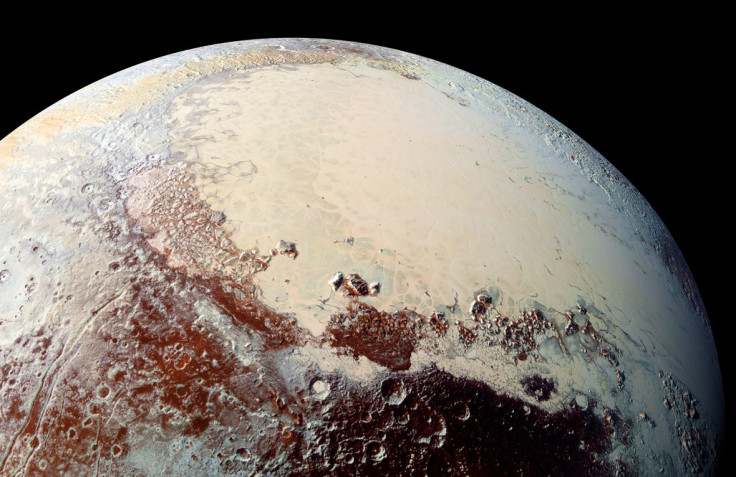NASA’s Airplane-Mounted Telescope Uncovers Mystery Behind Pluto’s Haze

KEY POINTS
- NASA discovered how Pluto's hazy atmosphere was formed
- SOFIA is a massive telescope mounted on an airplane
- The haze surrounding Pluto is made up of tiny particles
NASA’s high-flying telescope was able to observe the blue-tinted haze surrounding the planet Pluto. Through the telescope’s observations, NASA was able to understand how the haze forms in Pluto’s atmosphere.
NASA carried out its latest observations on Pluto using the Stratospheric Observatory for Infrared Astronomy (SOFIA). This instrument consists of a 9-foot telescope mounted on a Boeing 747 plane.
Through SOFIA’s observations, NASA was able to study up close Pluto’s hazy atmosphere. According to the agency, the haze is composed of tiny particles that remain suspended in the atmosphere for a long time. By the time they fall back to the surface, new sets of particles have already reached the atmosphere.
“There had been hints in earlier remote observations that there might be haze, but there wasn’t strong evidence to confirm it really existed until the data came from SOFIA,” lead researcher Michael Person of the Massachusetts Institute of Technology’s Wallace Astrophysical Observatory said in a statement. “Now we’re questioning if Pluto’s atmosphere is going to collapse in the coming years – it may be more resilient than we thought.”
According to the researchers, particles reach the atmosphere as the ice on the surface of Pluto vaporizes due to sunlight. This process releases tiny particles from the ice, which came from methane and other gasses in the atmosphere that rain down on Pluto’s surface as they react to the heat from the Sun.
The researchers noted that the particles forming Pluto’s haze measure only about 0.06 to 0.10 microns thick, making them about 1,000 times smaller than the width of human hair. Due to their small size, the particles scatter more blue light than other colors as they float towards the atmosphere. This creates the bluish tint within the haze surrounding Pluto.
“The haze thickens and then fades in a cycle lasting just a few years,” NASA stated. “This indicates that the tiny particles are being created relatively quickly. The researchers suggest that Pluto’s unusual orbit is driving the changes in the haze and therefore may be more important in regulating its atmosphere than its distance from the Sun.”
© Copyright IBTimes 2025. All rights reserved.





















